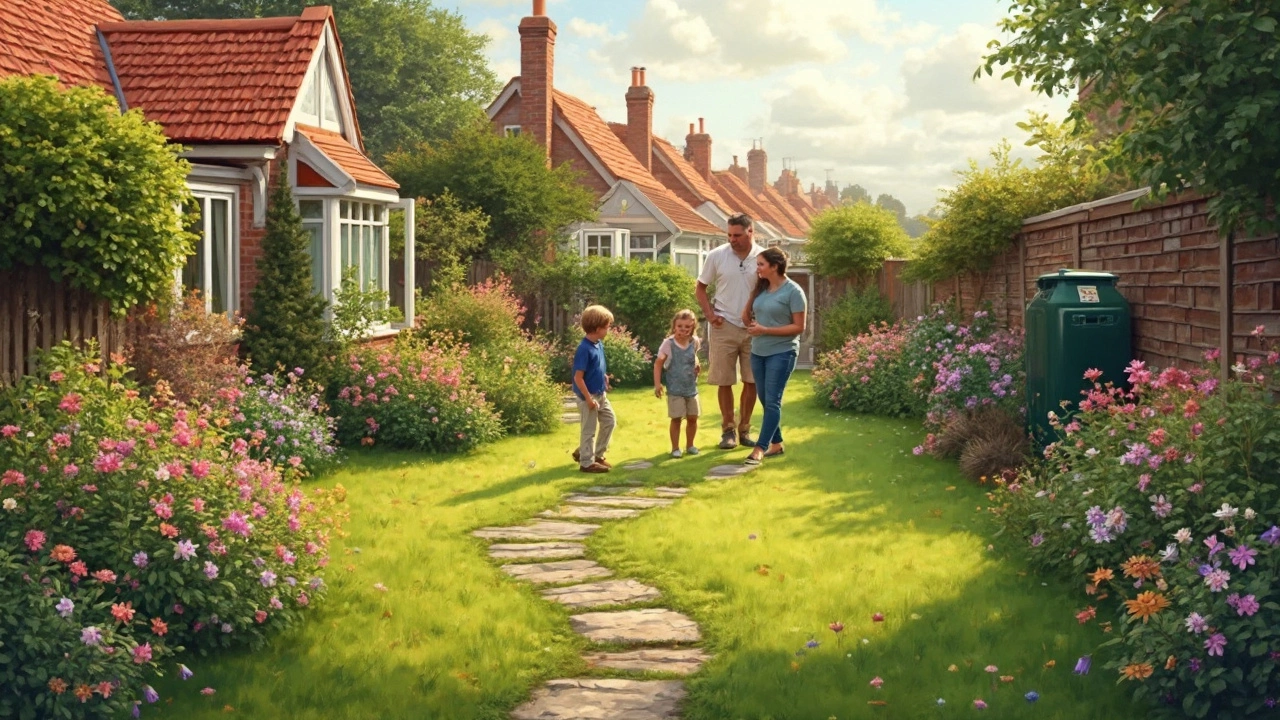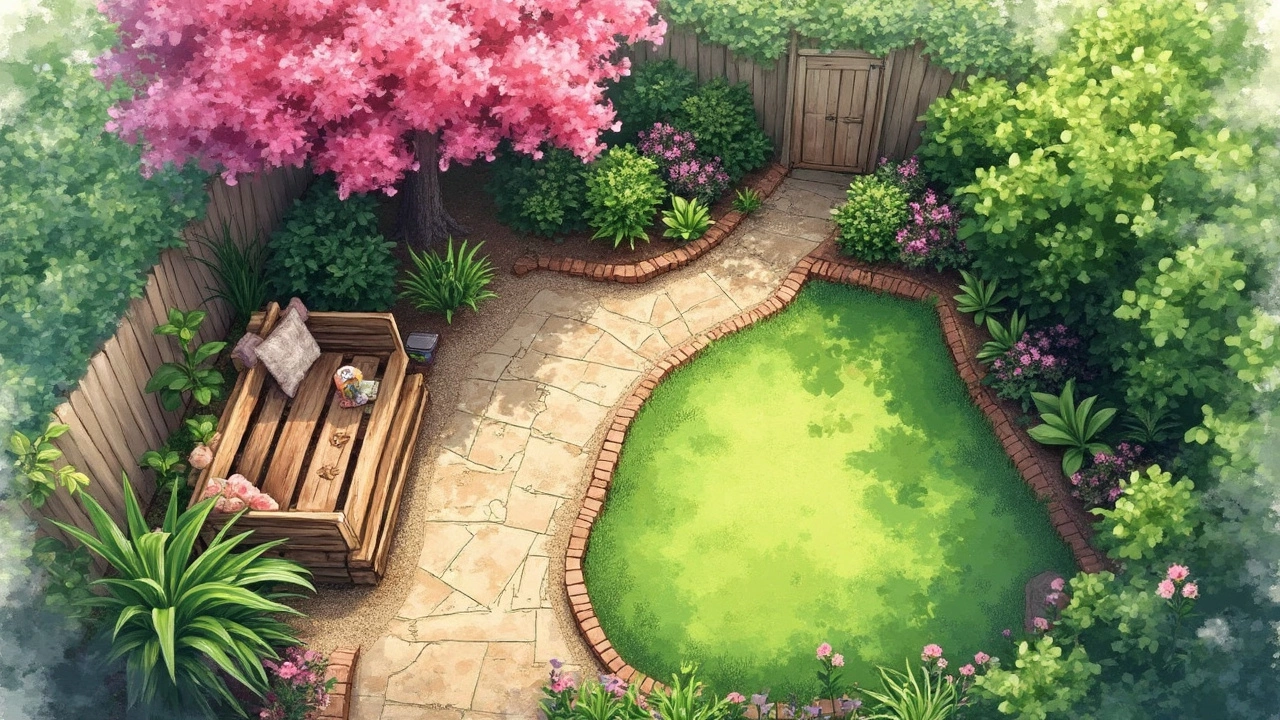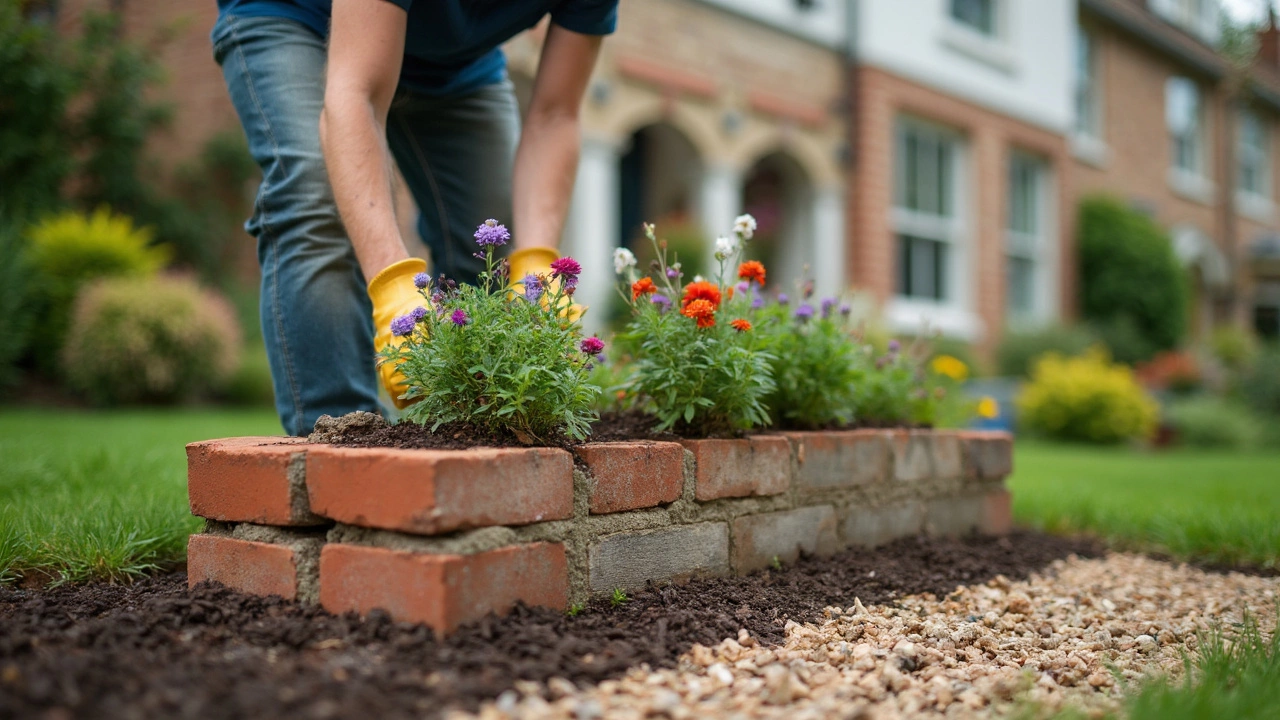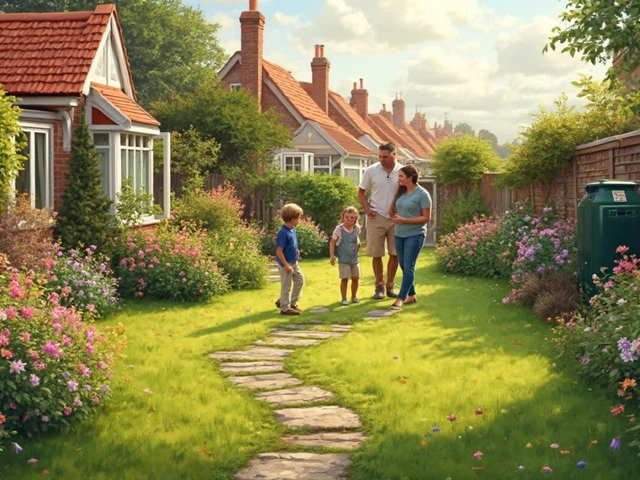Most Cost Effective Landscaping: Smart Choices for Your Yard

Want a yard that looks great but doesn’t wreck your finances? You’re not alone. Most homeowners wonder how they can keep their landscaping costs under control while still getting results they love. Truth is, a good-looking yard doesn’t have to mean big spending if you’re strategic about where the money goes.
It's usually not the plants or mulch that squeeze your wallet the most—it’s labor. If you’re willing to roll up your sleeves, you can cut the bill in half. Not into DIY? Picking low-maintenance plants and durable materials upfront can save you hundreds over time.
Don’t fall for the trap of thinking fancy equals better. Sometimes, a simple design with the right choices gives you a yard that’s easier to care for and much cheaper in the long run. Let’s break down exactly where your money goes and how to make every landscaping dollar do more.
- Digging Into Costs: What Really Eats Your Budget
- Plant Choices That Give the Best Bang for Your Buck
- DIY Versus Hiring: When to Save and When to Spend
- Materials That Last (And Don’t Cost a Fortune)
- Low-Maintenance Hacks to Cut Ongoing Costs
Digging Into Costs: What Really Eats Your Budget
If you’ve ever gotten a landscaping quote that made your jaw drop, you’re not alone. So where’s all that money actually going? Knowing the answer is the first step to more cost effective landscaping.
Labor is the single biggest slice of most landscaping bills—sometimes up to 60%. Pros charge for things like prepping the site, installing plants, laying pavers, hauling materials, and cleanup. The bigger or trickier your yard, the more you’ll pay for hours worked. If the job needs heavy machinery or skilled work (like stonework or drainage fixes), expect the price to jump.
Materials are next. That means everything from plants to mulch, gravel, edging, sod, and hardscaping like patios or retaining walls. A load of river rock, for example, can run a few hundred bucks, and pavers can cost a few dollars per square foot just for the material. Come spring, plant prices spike. Want rare or oversized trees? Add a lot more.
And then there’s design. If you hire a pro to draw up a plan, you’ll pay for their know-how. Fees can range from a few hundred to a few thousand dollars, depending on how complex your vision is. Some designers roll this into the total cost. Others charge separately.
Here’s a snapshot of how things break down for a typical landscaping project:
| Cost Category | Typical Share of Budget |
|---|---|
| Labor | 50-60% |
| Materials (plants, mulch, sod) | 25-30% |
| Hardscaping (patios, walls, paths) | 10-20% |
| Design Fees | 5-10% |
Other sneaky costs can add up quick, too: delivery fees, dumping yard waste, irrigation systems, or even permits if you’re doing something bigger. Cutting corners in the planning stage usually backfires, so think long-term. Cheap mulch won’t protect your plants. Bargain pavers can crack within a couple of winters. Going for truly affordable landscaping means spending smart, not just spending less.
Plant Choices That Give the Best Bang for Your Buck
If you want cost effective landscaping, your plant choices can make or break your budget. Flying blind at the garden center is a quick way to end up with a bunch of plants that die fast or gobble up all your weekends with care. Picking the right types saves you money right now—and keeps saving you later.
Native plants are the MVPs here. They’ve adapted to your local climate, which means less watering, less fuss, and a way better shot at thriving. For example, if you live in Texas, Gulf muhly grass or blackfoot daisy are reliable and tough. Up north, try purple coneflower or serviceberry. Native doesn’t mean boring; lots have cool color and texture, and you’re not fighting Mother Nature to keep them alive.
Go for perennials over annuals when possible. Perennials come back every year, so you shell out cash just once and enjoy them for years. Think knockout roses, daylilies, hostas, or lavender for a low-maintenance yard. Want even more value? Mix in some ornamental grasses—they usually hold up in rough weather and fill in space for cheap.
Don’t buy mature plants unless you’re impatient. Smaller plants cost a fraction of the price and will catch up in a couple years. If you’re willing to wait, you’ll save a ton without really missing out long-term.
Here’s a quick look at typical annual vs. perennial costs and how they stack up year over year:
| Type | Average Cost | Lifespan | Annual Cost (over 5 years) |
|---|---|---|---|
| Annual | $4 each | 1 year | $20 |
| Perennial | $8 each | 5+ years | $8 |
Spacing matters, too. Don’t cram them in. Let plants grow into their spots, so you’re not yanking out dead or crowded plants next year. It just means less waste and less spending—plus your yard looks more natural.
When it comes to low maintenance yard goals, a mix of drought-tolerant perennials, tough groundcovers, and native shrubs is hard to beat. You’ll spend less on water, fertilizer, and time. That’s smart, affordable landscaping.

DIY Versus Hiring: When to Save and When to Spend
One of the fastest ways to impact your cost effective landscaping plan is deciding what you can do yourself and when to call in pros. Here’s the deal: Some jobs are perfect for rolling up your sleeves, while others end up cheaper (and way less stressful) if you let experienced folks handle them.
Let’s start with easy DIY wins. You can spread mulch, plant flowers, or edge garden beds over a weekend. Most basic planting and cleanup work just needs sweat, not special skills. Bagged mulch and plants from a local nursery are simple to haul in your car. Laying down landscape fabric or installing a few stepping stones isn’t rocket science either.
Big stuff—like building retaining walls, tackling drainage issues, or pouring concrete patios—usually isn’t DIY territory. If you mess these up, the repair bills get ugly fast. Pros have the right gear and know-how for jobs with permits, heavy lifting, or safety risks. For major tree removal, definitely bring in licensed help; dropping a tree the wrong way can crush more than your budget.
If you’ve got more time than money, doing it yourself makes sense, especially for repeat chores. But when your project gets complicated or requires specific equipment, hiring a crew may be smarter in the long run. Just don’t guess—get quotes upfront so you can really weigh the difference. You might be surprised how close the costs are when you add up all the small expenses, tool rentals, or time off work.
Here’s a quick guide on what’s usually cheaper (and smarter) to do yourself, and when to call a landscaping service:
- BASIC DIY: Mulching, planting shrubs or annuals, small garden beds, regular maintenance (mowing, pruning)
- PROS NEEDED: Tree removal, irrigation system installs, grading/drainage, large hardscape projects (patios, retaining walls), big sod jobs
For reference, hiring for a full yard redesign can run from $4,000 to $20,000 or more depending on size and complexity. Meanwhile, a few weekends of DIY basics might only cost you a couple hundred bucks in supplies. If your main goal is affordable landscaping, pick your battles smartly.
| Task | DIY Cost | Pro Cost |
|---|---|---|
| Mulching (500 sq. ft.) | $100 (materials) | $300-$500 |
| Planting 10 shrubs | $150 (plants, tools) | $350-$600 |
| Build paver patio (10x10 ft) | $1,000 (materials, rental) | $2,500-$4,000 |
Bottom line: For cost effective landscaping, use your DIY energy for low-skill, high-repeat chores and save the risky or technical stuff for the pros. The right mix makes your yard (and your wallet) look better at the end of the day.
Materials That Last (And Don’t Cost a Fortune)
When you're trying to keep your cost effective landscaping truly wallet-friendly, materials make or break the plan. It’s tempting to get sucked in by the look of high-end stonework and premium wood, but those choices hit hard on both your budget now and your maintenance bills later. Thankfully, you don’t have to compromise on durability or style if you know what to look for.
Let’s start with hardscaping. Concrete pavers are a no-brainer. They last for years, resist cracking, and cost a fraction of natural stone. Some brands even mimic the look of flagstone or brick. Gravel is another strong pick—especially for walkways and driveways. It’s cheap to buy in bulk and easy to install yourself. You can even freshen up bare patches in minutes for next to nothing.
For garden beds, skip pricey cedar or redwood borders and try composite edging or even recycled plastic. These options resist rot, won't get eaten by bugs, and look good for ages. Mulch is another budget saver if you choose the right type. Local bark mulch can be super affordable, and bonus: it boosts your soil and cuts down on weeds, saving you work and money each season.
Thinking about fencing? Instead of going all-in on wood, which needs tons of upkeep and frequent staining, try vinyl or metal panels. These last a decade or more and usually just need a spray with the hose to look clean. Chain link isn’t the prettiest, but it’s the champion of low-cost, durable fencing and can disappear behind a fast-growing hedge or vines.
Here’s a little data on how common landscape materials stack up for cost and lifespan:
| Material | Average Cost per Sq. Ft. | Typical Lifespan | Maintenance |
|---|---|---|---|
| Concrete Pavers | $5-12 | 25+ years | Low |
| Gravel | $1-3 | Forever, if maintained | Very Low |
| Mulch (bark/local) | $0.60-2 | 1-2 years (refresh needed) | Low |
| Composite Edging | $2-5 | 10+ years | Minimal |
| Vinyl Fencing | $8-12 | 20+ years | Minimal |
Before you grab your wallet, think about what makes sense for your yard’s traffic and climate. A super-cheap pick that wears out in a year just means you’ll pay double to fix it next spring. Go for materials that need little maintenance and stand up to weather, pets, and active kids. With a bit of planning, you can get affordable landscaping that holds up for the long haul.

Low-Maintenance Hacks to Cut Ongoing Costs
Let’s be honest, nobody wants to spend their weekends pulling weeds or shelling out for constant lawn service. The real win in cost effective landscaping is building a yard that basically takes care of itself. Here’s how you can set things up from the start, so you’re not sweating (or paying) later.
Go Native or Go Home
Native plants are your cheapest option over time – they thrive in your climate, need less water, and rarely get sick. In Texas, for example, using bluebonnet or lantana cuts water bills and pest problems. Plant smart and you’ll get more color with less effort.
Mulch Like You Mean It
Mulch isn’t just for looks. A thick layer (3 inches or so) locks in moisture, chokes out weeds, and keeps roots comfy. Organic mulch (like bark or wood chips) slowly breaks down and feeds your soil. Rocks and rubber mulch last even longer if you want super low maintenance, but they don’t feed the soil.
Xeriscape and Win
The fancy word 'xeriscape' just means using less water. Swapping out thirsty grass for gravel, native shrubs, or even artificial turf slashes not only water use but also mowing and fertilizing. According to the EPA, a household switching from a regular lawn to xeriscape can cut outdoor water use by up to 60%.
| Yard Type | Annual Water Use (Gallons) |
|---|---|
| Traditional Lawn | 24,000 |
| Xeriscaped Yard | 9,600 |
Smart Irrigation
Still need to water? Put your sprinklers on a timer and use weather-based controllers. Drip irrigation targets water straight to the roots, so there’s less waste–and way fewer weeds. Your water company might even give you a rebate for water-saving upgrades.
Lay Down Weed Barrier
Nothing runs up costs (and frustration) like fighting weeds. Landscape fabric under gravel or mulch means way less time pulling weeds and a cleaner yard overall.
- Pick low maintenance groundcovers instead of grass
- Use slow-release fertilizer so you aren’t out there as often
- Group plants by water needs (hydrozoning) to avoid wasting water
Dial in these hacks and watch the need for yard work, water, and chemicals drop. Half the trick is making smart choices at the start, so costs don’t pile up year after year.
